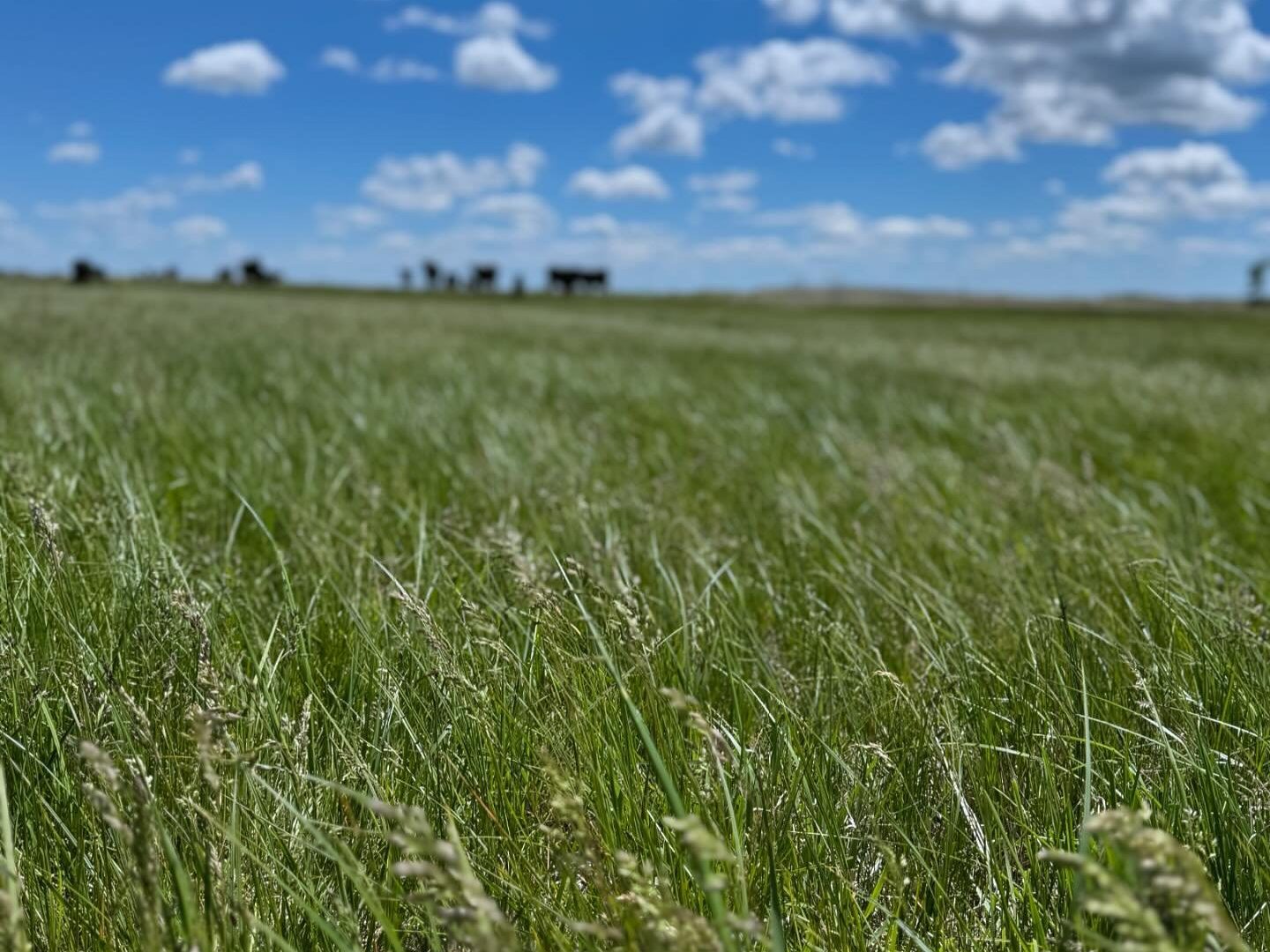
Most beef cattle spend their lives grazing on pasture grasses and forages. Regardless of breed, cattle are ruminants, which means they graze on vegetation and store their food in a specialized stomach for microbe fermentation before digestion. Fun fact: other animals in this category include giraffes, goats, deer and sheep. Cattle have the unique ability to turn pastures into protein by breaking down the complex structural fibers in forage and metabolizing them to eventually produce meat.
First, let’s clarify some terms. “Forage” refers to grasses or legumes that are fed to animals, while “roughage” is feed that is high in fiber and aids in rumen function.
When cattle are born, they can only metabolize their mother’s milk. Around the age of two months, they begin to engage in a small amount of “taste” grazing, which helps kickstart their rumen process. By three to four months, they are capable of handling forage and vegetation for growth. As they continue to grow, their need for higher-quality feed increases to produce high-quality protein. Silage, a type of roughage, is essential for maintaining healthy and efficient rumens. When digested, silage stimulates the rumen to mix the feed, making it more available for action by microorganisms and enhancing digestion.
Cattle producers’ care practices directly impact the protein quality. High-quality feed sources have a direct effect on beef taste and quality. As beef producers who market beef products, we know this firsthand. Producers must consider many factors when determining feed sources year-round, especially during winter. Harsh Nebraska winters and snow can directly impact feed availability, making it essential for producers to keep feed sources on hand in case natural forages become unavailable. This is why you often see stacks of hay bales near farmhouses. On average, each cow needs four to five round hay bales per winter season!
How do we determine how much feed our animals need? Similar to following a recipe in the kitchen, we can calculate feed requirements based on various factors such as gestation stage, cow weight and forage quality. Generally, cattle need around 2% of their body weight, or approximately 25 pounds of dry matter feed, daily. Grass hays typically contain about 7-10% moisture. The quality of forage increases with more “leafiness” compared to the amount of stems. Although we use a cattle nutritionist to help us calculate exact rations (diets), our cattle need about 30-50 pounds of feed matter per day to account for waste, moisture loss, weather patterns, and other factors. With 100 head of cattle, we require approximately 3,000-5,000 pounds of feed per day. Feed costs are one of many factors directly related to the cost of protein on our plate. As cattle producers, our goal is to ensure our cattle thrive by providing optimal nutrition for great-tasting beef, while also balancing waste management and financial sustainability.



